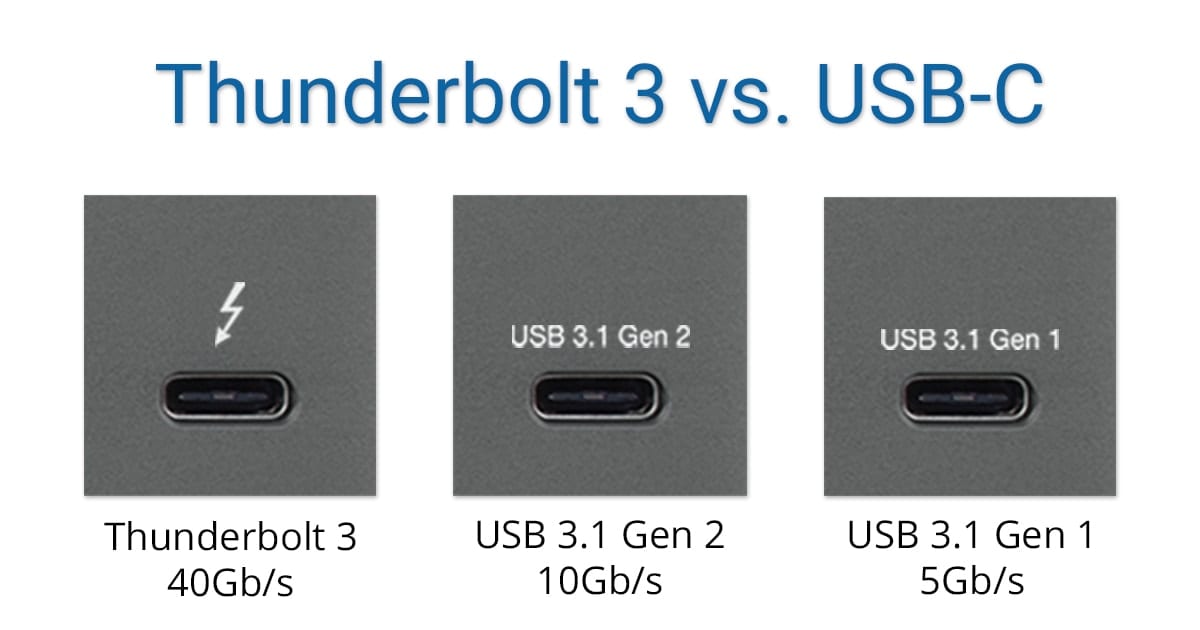While the two connection systems are compatible and look the same, there are differences when it comes to speed and transferring data. We’ll help you choose the right one to get the most out of your ports and peripherals. And make sure you use dedicated optimization software to keep your device running smoothly.

What is USB-C?
USB-C, or USB Type-C, is the main connector system currently used to transmit data and power to and from a device over a single cable. USB-C connectors are symmetrical, universal, and bi-directional, linking a data or power source (like a computer or wall socket) to a device (like a hard drive). USB-C ports can also be used to link two devices together.
USB stands for Universal Serial Bus, and different USB types include USB-A, USB-B, and USB-C. Typically, USB-A is used for smaller peripherals like keyboards, while USB-B is used for larger equipment such as monitors. USB-C caters to all kinds of peripherals and is the only type of USB cable that can send power and data in both directions.
Though it looks similar to the older micro-USB connector, a USB-C connector is distinguishable by the following features:
- The connector is oval and compatible across brands and devices, including iPhones, Androids, MacBooks, and Nintendo Switch.
- The connector is symmetrical, so it can be inserted into a port either way, unlike older USB types that need to be inserted the right way.
- It can transmit data at high speed — up to 20Gbps, depending on the model.
- It delivers a lot of power, up to 100W to charge smaller devices. New USB-Cs can supply up to 240W to support larger applications like gaming PCs.
Some USB-C cables can even transmit DisplayPort audio and video signals. The port needs to support DisplayPort over USB-C to connect a device to an external monitor or TV.
What are Thunderbolt and USB-C used for?
USB-C and Thunderbolt are used to charge devices, transfer data, and connect computers to peripherals such as monitors or external hard drives. The key difference is that Thunderbolt has faster transfer speeds.
Professionals who work with large files benefit from Thunderbolt’s high-speed data transfers between a computer and an external hard drive. If you ever want to format your hard drive, you should always back it up first. A Thunderbolt connection will accomplish this task faster. After formatting, learn how to speed up your PC and clean up your computer to keep it working its best.
Thunderbolt also reduces the need for separate power sources, easing clutter and expanding usability. Fewer cables mean less dusting when physically cleaning your PC.
Thunderbolt ports can connect external 4K monitors and Thunderbolt expansion hubs to a computer. That allows you to dramatically increase the number and types of ports you can use (e.g., Ethernet, HDMI, etc.). If you want to use the daisy-chaining functionality, you should choose DisplayPort vs. HDMI.
Is USB-C or Thunderbolt better?
Thunderbolt is more advanced than USB-C. But the best option for you depends on your preferences and what you’re using your connectors for. Given the cost, Thunderbolt isn’t necessary if you’re using basic peripherals like printers. Thunderbolt’s main value is its fast data transfer speeds.
Link Image: https://tinyurl.com/rdn8ps7f
